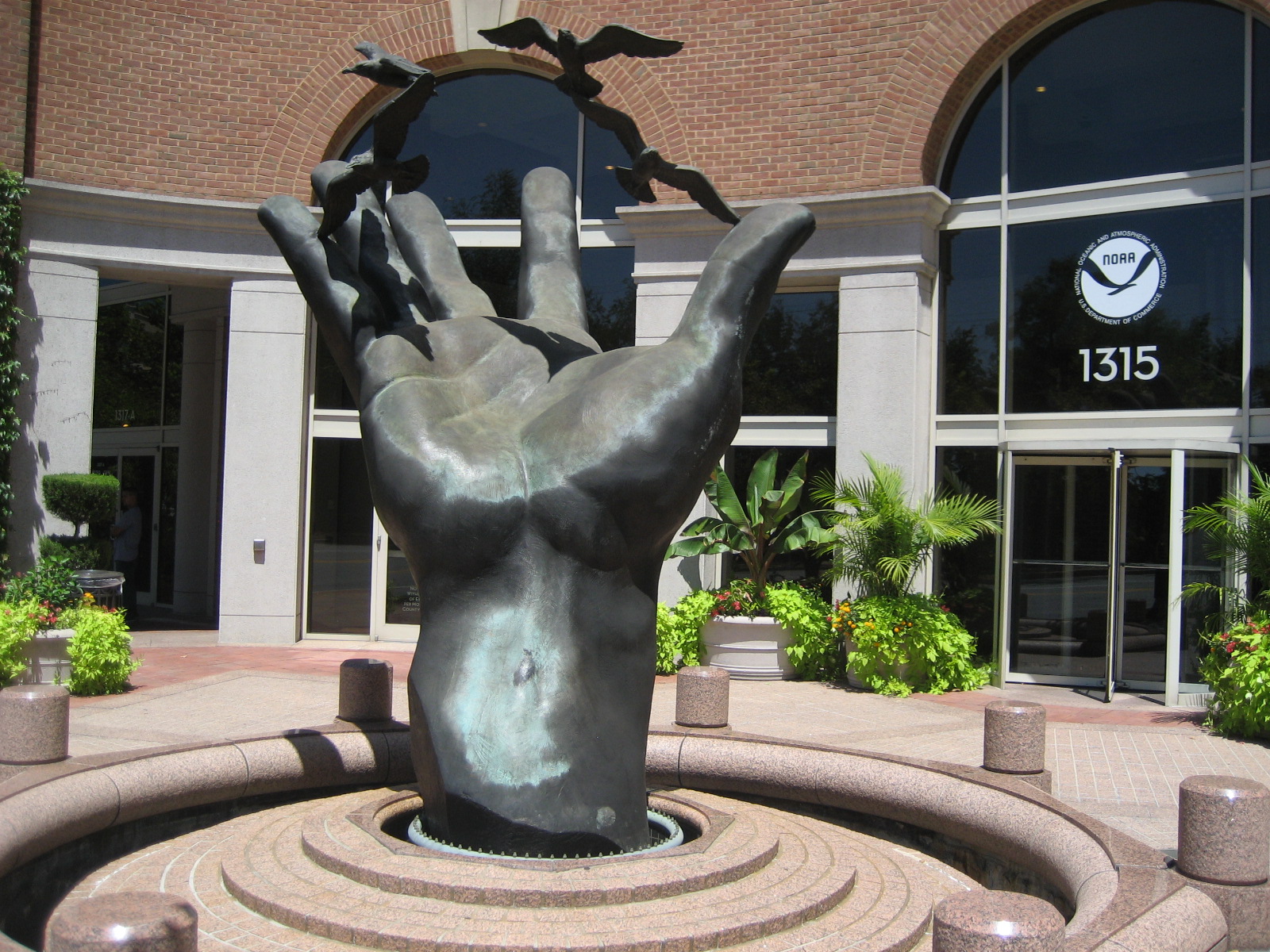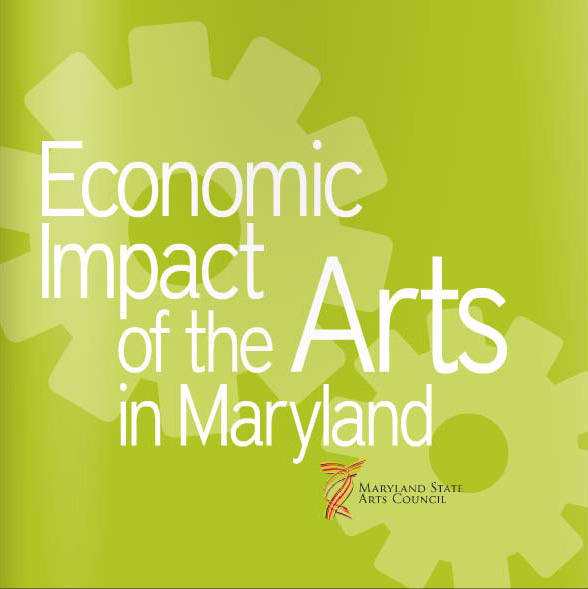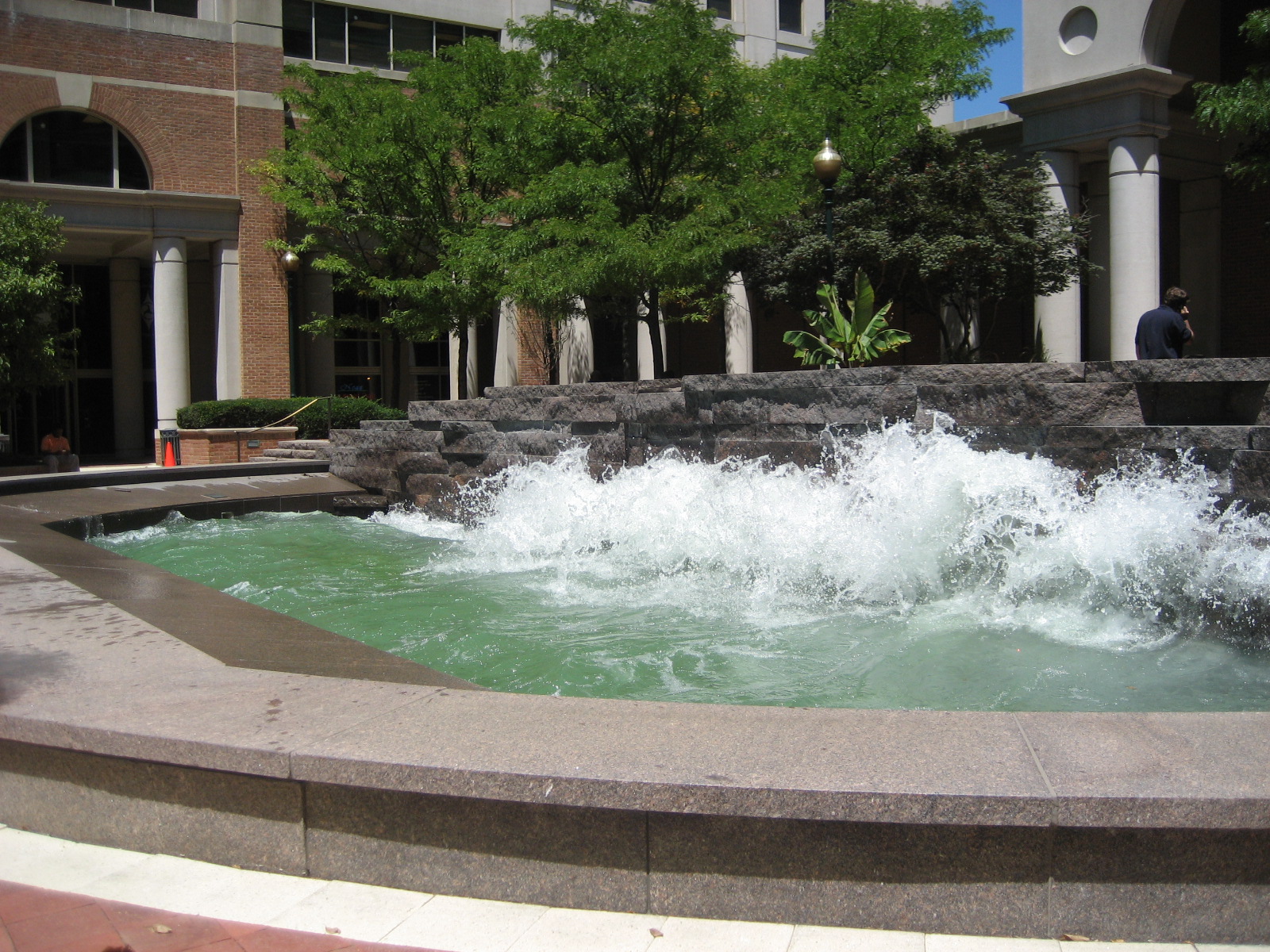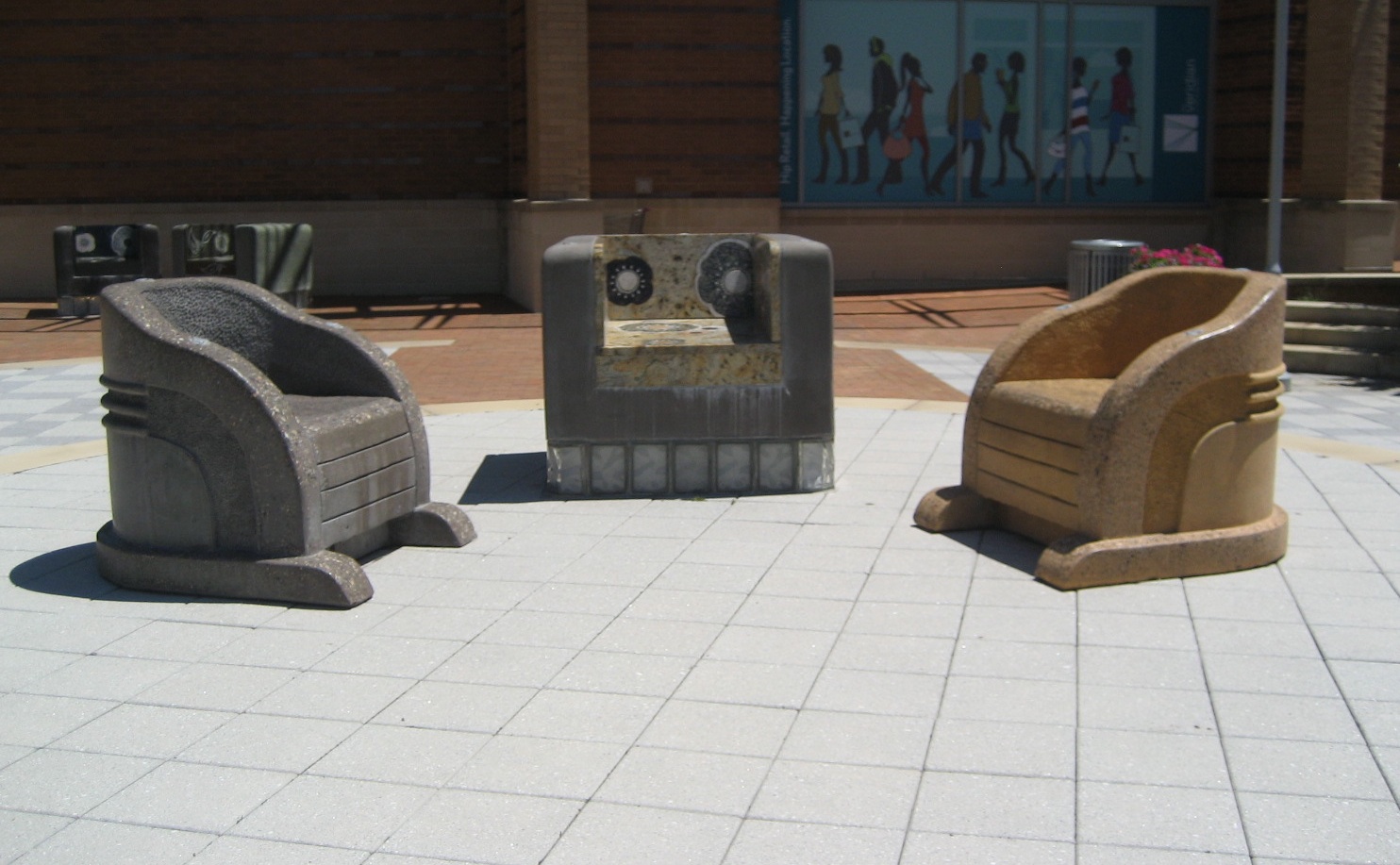Over the past few decades, Montgomery County has seen a steady rise in the number of public art pieces, bringing artistry and creativity to spaces large and small. We see sculptures, art-enhanced plazas, benches and more in schools, libraries, parks, retail centers and office buildings. The collection provides a set of assets that contribute an extra appeal to the look and feel of our communities.
The Planning Department helps build the collection by encouraging developers to contribute public art in exchange for density.
Thus, we have an outdoor pool with real waves correlated to the tides outside the National Oceanic and Atmospheric Administration building in Silver Spring.
An outstretched palm with birds at a busy Silver Spring intersection.

Catching the eye of motorists and pedestrians at East-West Highway and Colesville Road, Silver Spring
And a set of three oversized granite block chairs that are both eye-catching and a respite for pedestrians on a well-traveled avenue in Bethesda.
Just how art commissioned through private development should work, and how it fits in with the broader public art agenda will be the subject of Planning Board review next week of a public arts policy drafted by The Montgomery County Arts and Humanities Council.
The public arts policy aims to manage, maintain and add value to the full collection. Council members say a more systematic approach to managing and maintaining the artworks will add value to the collection as a whole.
Planners work with professional artists on a review panel that looks for pieces that help build a sense of place. They analyze art and placement with an eye toward access, lighting, durability and other factors. Where pieces are located and how they connect to their surroundings and engage viewers, they say, can be as important as the design of the artwork itself.
The policy has several goals, among them:
- Promoting culture, community identity and civic pride
- Celebrating Montgomery County heritage and ethnicity
- Integrating art into architecture and the landscape
- Enhancing the image of the county locally as well as nationally
- Encouraging federal, state and private support for public art
Above all, it’s intended to help place art where it will be enjoyed by many rather than just a few by placing art throughout the county. A consistent approach would help develop art as a true county asset, rather than a sporadic set of pieces.
The Board will review and adopt the document as the standard for managing public art pieces for private development. Other county agencies and organizations, such as Montgomery College and the County’s Executive Branch, also will weigh in.
It is no accident that the developer-placed art appears mainly in down-County locations like Silver Spring and Bethesda. Since 1974, when the optional method of development was created, property owners in high-density zones have been able to apply for additional density if they create more attractive urban environments. Among their options is installing art.
Last year, the County Council approved the Commercial Residential Zone, which provides a list of public amenities for developers opting to earn bonus density. Among the amenities is supplying public art or pay a fee in lieu of providing a new piece.
Also on tap is creation of a Public Art Road Map, intended to provide a big picture look at existing art in the county and point out gaps.

Art has more of an economic impact than most people realize. Statewide, the nonprofit arts sector has a $1 billion impact on the economy, supporting more than 11,000 jobs, according to a just-released report by the Maryland State Arts Council. The report analyzed the impact of performing arts, visual arts, and multidisciplinary arts by region and found that the Capital Region, which includes Frederick, Montgomery and Prince George’s counties, was second to the Central Region (Baltimore, Anne Arundel and surrounding counties) in contributing revenue ($431.2 million) and arts-related jobs (4,865) compared to $495 million and 5,745 jobs.
One might conclude that Montgomery County could do a better job in supporting the arts. Art makes communities distinct, but needs curation and care. The public art policy is one step toward making that happen.

